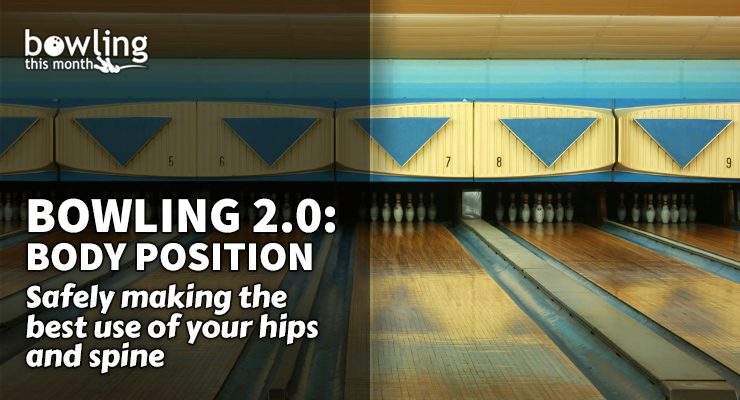Article Contents
- 1. The modern start position
- 1.1. How much do we bend our knees?
- 1.2. Spine and hip position
- 1.3. Ball position
- 2. Body position during the approach
- 2.1. Personal variables
- 2.2. Setting the spine tilt
- 3. Release position
- 3.1. The importance of your trail leg
- 3.2. Achieving balance
- 3.3. Solving balance issues
- 4. Final thoughts
Note: This article is only available to Bowling This Month subscribers.
It’s time to talk about one of the most misconstrued topics in the modern game: body position. This is partly because of the language that is often used, but also due to a misunderstanding of the biomechanics involved. While general biomechanical principles apply, your core position in your approach is dependent on a lot of personal variables, such as your hip flexion, the length and strength of different body parts, etc. Much of what we’ll discuss today will be best practices, but the particular details can vary a little bit with your body type.
When it comes to analyzing body position, we’ll mainly look at two points of the approach: your start position and your release position. Note that this is different from your finish position, which is long after the ball has gone down the lane. While the finish position can give you some information about the approach, the release position is much more important. You could theoretically do a backflip after the ball comes off your hand and it wouldn’t make a difference to the ball motion. With this in mind, we’ll focus on the start, discuss what happens in between, and then wrap things up with the release position.
The modern start position
Before going forward, let’s talk about the language we use. While the terms “start position” and “stance” are often used interchangeably, it isn’t quite as accurate to use the word stance. First, stance is a much more static word, while start position implies that there will be movement—that we’re about to get started.
More importantly, from a biomechanical point of view, stance could also be used to refer to the finish position, because any static position would apply. For example, when doing a release drill, the starting position for that drill could be considered your stance. For these reasons, we’ll use the term start position and cover a few key items:
- Knee bend
- Hips and spine positions
- Ball position
How much do we bend our knees?
When it comes to the overall start position, but especially your knee bend, it’s worth noting that I’m not a fan of the term “athletic pose.” This terminology implies a lot more knee bend than bowlers really need in their start position. There’s a simple biomechanical rule that applies here: the higher your center of gravity (CG), the higher your speed.
If your hips are too low due to too much knee bend, it’s impossible to move fast. You simply can’t walk quickly to the line if your hips are too low in ...
Already a premium member? Click here to log in.


 (Only
(Only 